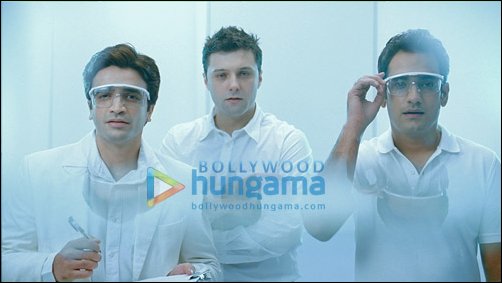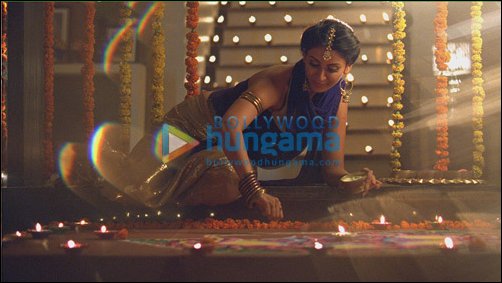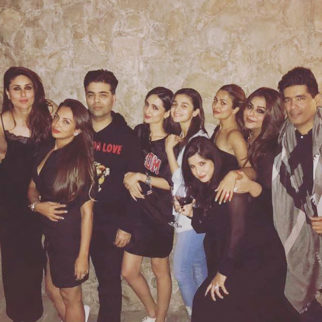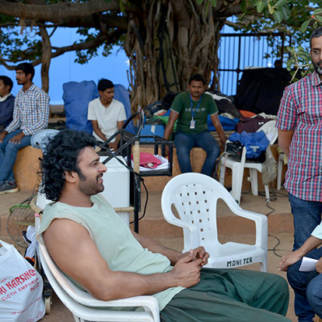People Behind the Scenes: Interview with film colourist Miten Udeshi
-
 One of the most intricate aspects in the post-production process of a film is the Digital Intermediate and Colour Grading Element. This is extremely crucial to garner the overall attractiveness in a movie. The colour grading process alters the colour of the film digitally to augment the narrative of a motion picture, Read More">the artist whoRead More
One of the most intricate aspects in the post-production process of a film is the Digital Intermediate and Colour Grading Element. This is extremely crucial to garner the overall attractiveness in a movie. The colour grading process alters the colour of the film digitally to augment the narrative of a motion picture, Read More">the artist whoRead MoreOne of the most intricate aspects in the post-production process of a film is the Digital Intermediate and Colour Grading Element. This is extremely crucial to garner the overall attractiveness in a movie. The colour grading process alters the colour of the film digitally to augment the narrative of a motion picture, the artist who performs this task is known as a colourist. Lately one of the emerging trends is the digital grading system for television commercials that's gaining prominence in the post-production industry. Miten Udeshi colourist from Pixion Studios has coloured numerous television commercials some of his work include the McDonalds Mc flurry commercial, the theme film for FIAT cars, Lakme, Dove Shampoo, Times of India, Blackberry and many other advertisements made at Pixion Studios. He has over fifteen years experience under his belt, Bollywood Hungama gets the colour grading extraordinaire to shed light on creativity, colours augmenting a message in a story and the challenges of being a film colourist.
"The management entrusted me and thought I would do much better as a colourist"
I started my career as an editor in post production, after joining Prime Focus Studios I worked on many commercials and spots for MTV, Channel V etc. With the work I put in, the management entrusted me and thought I would do much better as a colourist. Thus my journey began as a colourist, today I find myself working for the most renowned post production studios in the industry, Pixion. I have always been enticed by post-production work since my school days. Initially I did my course from a studio called 'EDIT'. Later in 2000 I went to the US and trained in Da Vinci colour grading system in Miami, Florida. I have not studied colours and its theories rather I use my intuition and intelligence to fill the colours in a film. -
 “The most challenging aspect of the commercial was to intrude the colours seamlessly” The Nike commercial I have worked on was extremely challenging as this was one of the biggest and the first of its kind to be done in India, everyone associated with it had huge expectations, Read More">the most challenging aspect of the commercialRead More
“The most challenging aspect of the commercial was to intrude the colours seamlessly” The Nike commercial I have worked on was extremely challenging as this was one of the biggest and the first of its kind to be done in India, everyone associated with it had huge expectations, Read More">the most challenging aspect of the commercialRead More"The most challenging aspect of the commercial was to intrude the colours seamlessly"
The Nike commercial I have worked on was extremely challenging as this was one of the biggest and the first of its kind to be done in India, everyone associated with it had huge expectations, the most challenging aspect of the commercial was to intrude the colours seamlessly. This was a very important TVC for me with its delivery that matched international standards.
"Films give the scope to experiment and it does not restrict the influx of colour"
The raw stock is very critical and there are times that scenes are under exposed and it gets very difficult to manage. I generally try working on the gamma and black levels that helps to enhance the image required. With capturing in film, the leeway is huge as compared to digital. Films give the scope to experiment and it does not restrict the influx of colour. At the same time digital is becoming quite prominent in the industry and we should definitely look forward to the innovation that it brings in for colour grading, there are new formats as well like the Alexa, 5D that are available and I am more inclined to work on them. The best thing that I have learnt in the business over the years is going unprepared because, when I prepare myself to grade a film, I restrict myself with the thoughts and ideas that I preconceived. Approaching a project unprepared, makes me have the freedom to colour the film with what feels best, this augments my creativity and helps me deliver quality work. -
 “A concoction of the director’s vision, Read More">the film content and my creativity” The key in being a colourist is to enhance the image by the tools of the machine and to garner a picture that fits well to the subject of the film; the focus has to be on the content of the film. TheRead More
“A concoction of the director’s vision, Read More">the film content and my creativity” The key in being a colourist is to enhance the image by the tools of the machine and to garner a picture that fits well to the subject of the film; the focus has to be on the content of the film. TheRead More"A concoction of the director's vision, the film content and my creativity"
The key in being a colourist is to enhance the image by the tools of the machine and to garner a picture that fits well to the subject of the film; the focus has to be on the content of the film. The job is complete with the support and vision of the director, one of the most challenging and intriguing part of colour grading is in creating the 'desired'. Therefore my focal point for delivering a project consists of, a concoction of the director's vision, the film content and my creativity. I always listen to the script from a director's perspective and then work on it as needed. I look at the footage and use my imagination to try and deliver more than what's expected out of it. My clients love the idea that I prepare around six or seven options to look at, this gives them a wider perspective for them to choose and finalise on the look and feel of the movie.
"Colour grading for a movie is much different since they are in a longer format as compared to commercials"
There is a huge difference from colouring feature films and commercials. Television commercials are in a smaller format as compared to films. In a day I get to colour grade around three films where every advertisement has a different look, emotion and theme. The day's journey excites me and in fact I find it very challenging to move from various TVC projects with so many disparities between them. Where-in colour grading for a movie is much different since they are in a longer format as compared to commercials, movie projects don't give a larger scope in using your own creativity to change the colours and experimenting with it.



